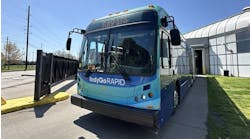Mayor Edwin M. Lee joined the San Francisco Municipal Transportation Agency (SFMTA) to announce the launch of real-time parking data for SFpark. This federally funded pilot project run by the SFMTA uses new smart parking management technologies and pricing policies to make it easier and faster to park in San Francisco. Better management of parking will open San Francisco’s streets and result in cleaner air, improved safety and faster Muni times.
“Cities around the world are combating parking and traffic congestion problems,” said Mayor Lee. “With SFpark, San Francisco is the first city in the world to pursue a comprehensive parking-based approach to congestion management and greenhouse gas emission reduction that will also support local merchants and keep San Francisco moving.”
“This innovative project will reduce circling and double-parking, help make Muni faster and more reliable, reduce congestion, and create safer streets for everyone,” said SFMTA Executive Director/CEO Nathaniel P. Ford Sr. “The parking information on the app, the website, and the real-time information signs will allow SFpark to also make it easier to park and drive in San Francisco.”
As of today, SFpark real-time parking availability and pricing information is available via SFpark.org, the SFpark app for the iPhone and an open data stream for outside app developers. The SFMTA has conducted outreach with the app developer community to help ensure broad awareness of this new data feed and has created a section of the SFpark.org web site to make it easy for developers to access and understand this data stream. These tools will help people decide where and when to drive, directing them to blocks and garages with open parking spaces.
The SFpark website provides customers the ability to see parking availability and cost before heading out the door. The mapping tool on the home page shows location, high, low or medium availability and rate information for SFpark garages and on-street parking spaces. The SFpark iPhone app uses the same data feed to provide a great mobile option. By providing a real-time data feed to the public, application developers and companies, such as Google and in-vehicle navigation systems, can also distribute this data to drivers.
Later this year, the real-time parking data will also be made available via the region’s 511 system, and the SFMTA will make parking availability information for parking garages available via a text message service as well as 12 changeable electronic variable message signs. SFpark will also add, over the next several weeks, the remaining SFpark garages to the real-time data for the website and apps. Currently, two of the SFpark garages, Lombard and Moscone, have data in the real-time feed.
The first demand-based rate change at City SFpark on-street automobile parking spaces will be implemented over the coming months and will continue at SFpark garages and on-street motorcycle parking spaces. The SFMTA will adjust rates based on demand to find the lowest hourly rate possible in each pilot area to achieve the right level of parking availability to make parking easier. Rates will be adjusted no more than once a month and only in small increments of no more than $0.50 per hour. The goal of these pricing adjustments is to have at least one open parking space on every block at most times and parking garages that rarely fill up.
Other elements of this program already in place or currently being implemented include:
• New single- and multi-space meters that accept credit cards as well as coins and SFMTA parking cards
• Longer parking time limits of four hours or no limit in some areas
• Facility upgrades at City-owned garages
• Pay-by-Phone convenience at SFpark and regular City and Port meters
The SFpark pilot covers 7,000 of San Francisco’s 28,800 metered spaces and 12,250 spaces in 15 of 20 SFMTA-managed parking garages. These garages and spaces are located in the following neighborhoods: Civic Center, Hayes Valley, the Financial District, SoMa, the Mission, Fisherman’s Wharf, the Fillmore and the Marina. The SFpark pilot is 80 percent funded by the United States Department of Transportation’s Urban Partnership Program and will run until summer 2012.


